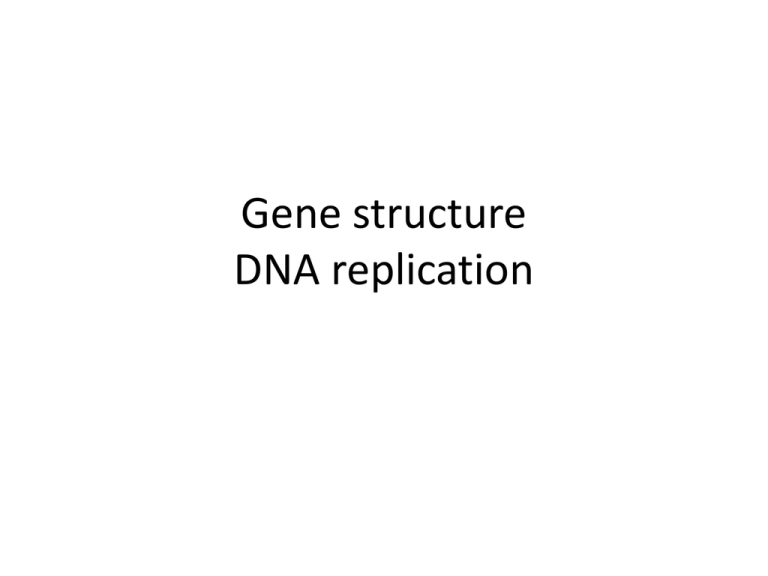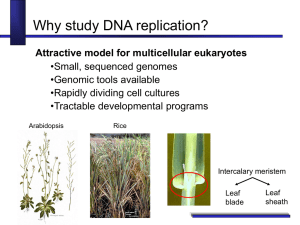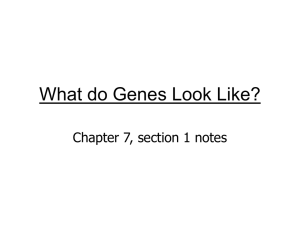Lecture 9
advertisement

Gene structure DNA replication Figure 7.4A Figure 7.5 DNA Structure • The DNA double helix has grooves: a wide major groove and a narrow minor groove. • • - These provide DNAbinding proteins access to base sequences. Figure 7.6 RNA Structure • RNA differs from DNA: • - Usually single-stranded • - Contains ribose sugar • - Uracil replaces thymine Figure 7.4B The Bacterial Nucleoid • Bacteria pack their DNA into a series of loops or domains, collectively called the nucleoid. • - Loops are anchored by histone-like proteins Figure 7.8 DNA Replication • Replication of cellular DNA in most cases is semiconservative. • - Each daughter cell receives one parental and one newly synthesized strand. Figure 7.13 Figure 7.14 Figure 7.15 Figure 7.18b Figure 7.18a DNA Replication • Animation: DNA Replication Click box to launch animation Figure 7.19 Figure 7.21 Analysis of DNA • Restriction endonucleases cleave DNA at specific recognition sites, which are usually 4 to 6 bp and palindromes. • • - May generate blunt or staggered ends Figure 7.27A Analysis of DNA • Agarose gel electrophoresis can be used to analyze the DNA fragments obtained by treatment with restriction enzymes. Figure 7.27B Analysis of DNA • The polymerase chain reaction (PCR) can produce over a million-fold amplification of target DNA within a few hours. Figure 7.29









